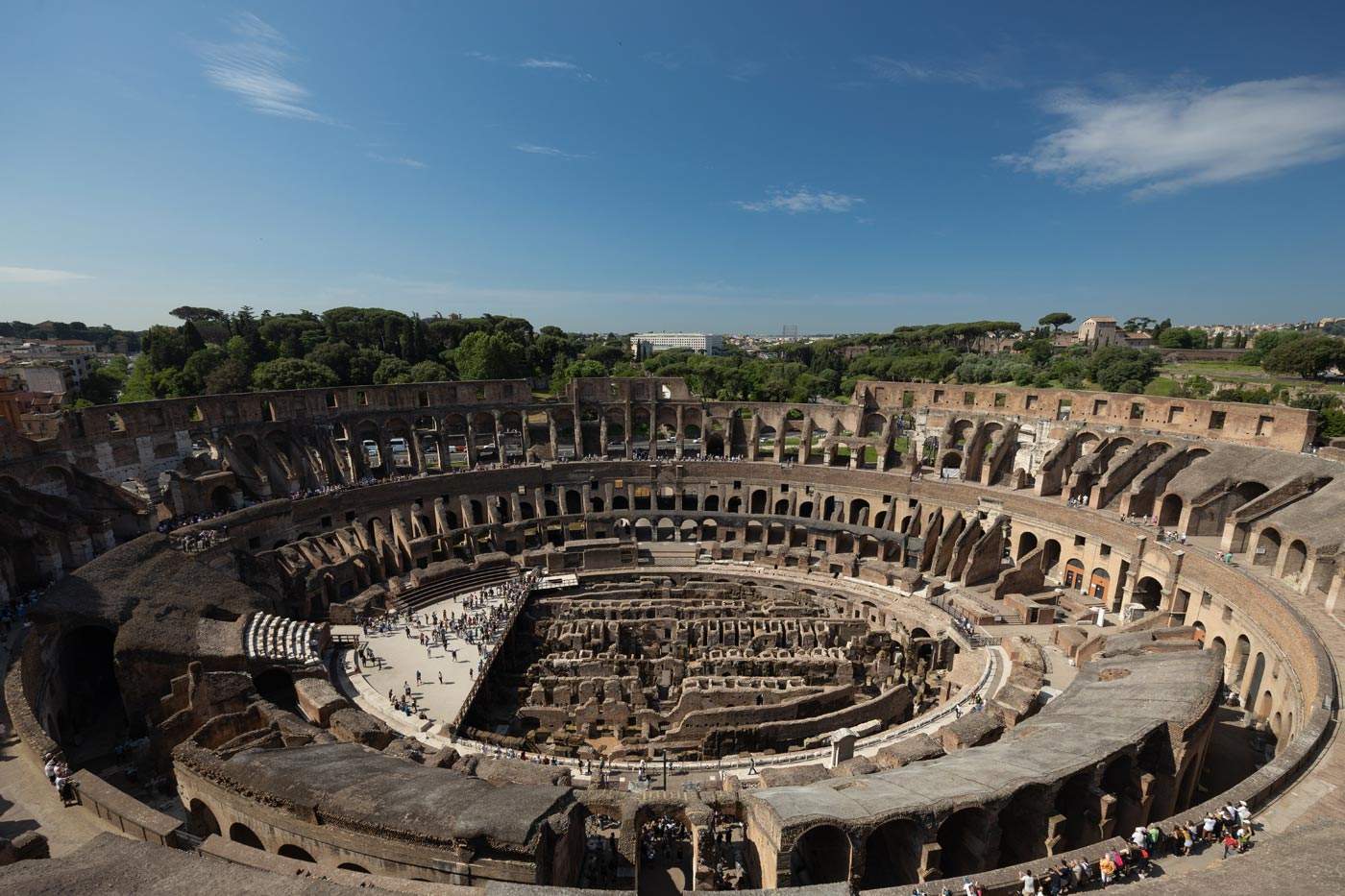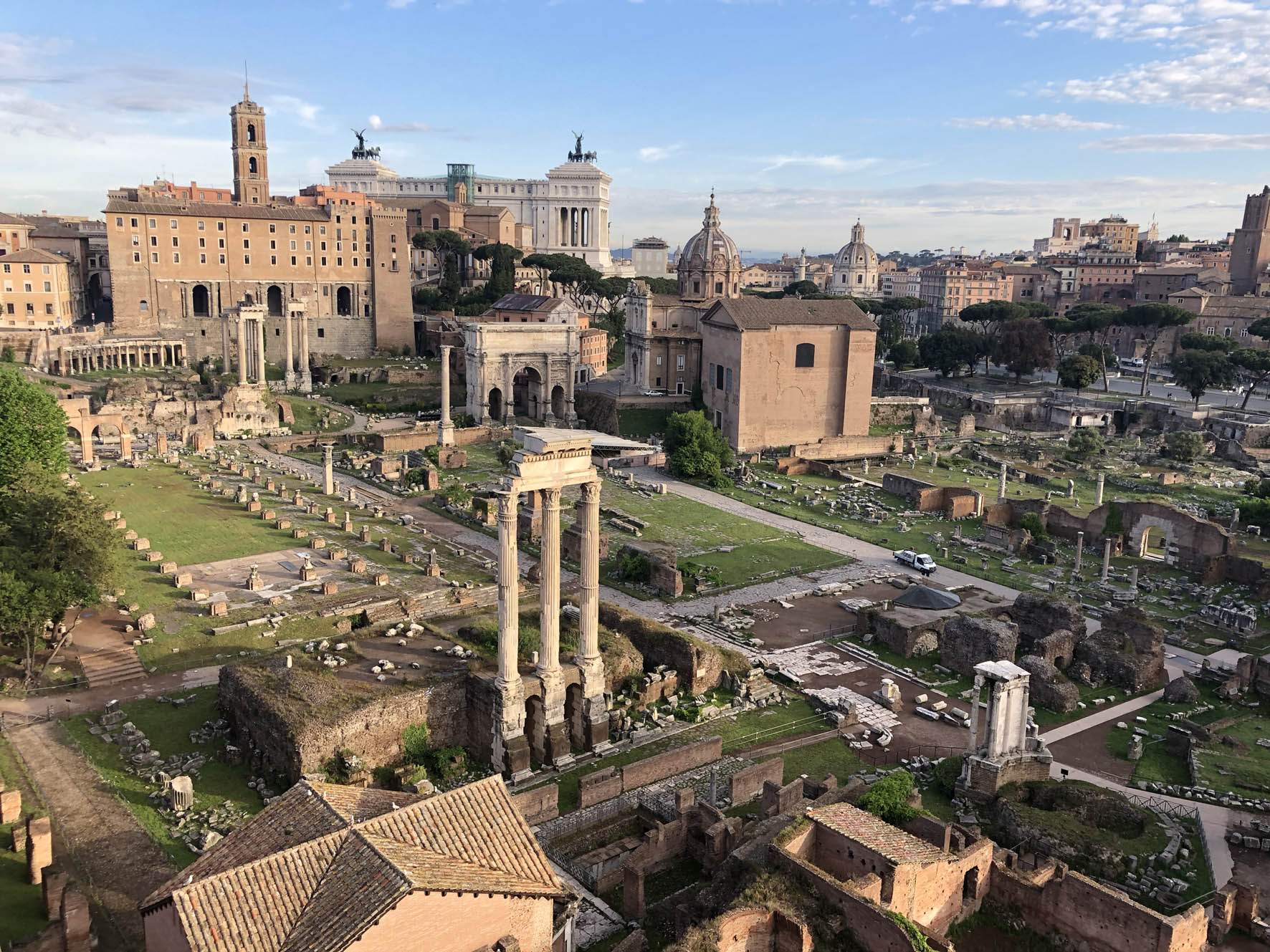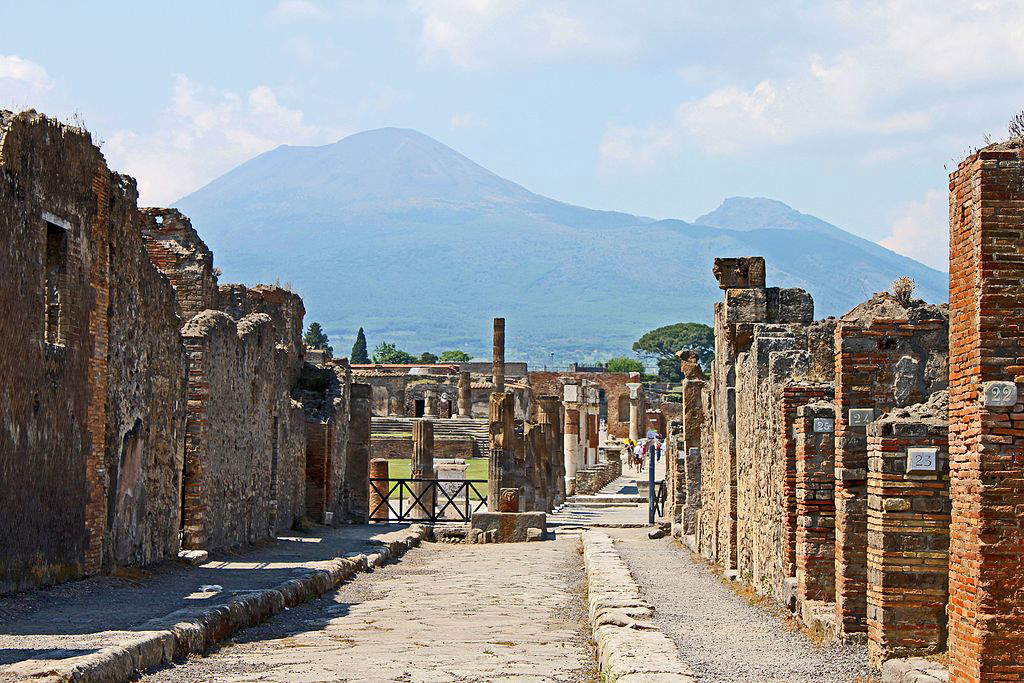Andrea Carandini and the problems of artistic heritage protection
A long article written by one of Italy’s best known and most important archaeologists, Andrea Carandini, came out a few days ago in Corriere della Sera. A text that deals with a topic of decisive importance for Italy and Italians, but despite this less and less practiced. The protection of the artistic heritage. A theme veered by Carandini into an essential reflection. What is the meaning of the presence of the past in today’s world and how this past is valued. A topic he addresses starting from an only seemingly side issue. The increasingly widespread abandonment of historical tradition in opera productions to make way for solutions between improvised and folkloric. And he gives the example of a Bohème, with all certainty the one staged a month ago at the Puccini Festival in Torre del Lago, set at the time of the “French May,” that is, the fake revolution of the so-called “sixty-eight.” So that on the stage we sawbohèmiens dressed in jeans, that is, in the customary uniform of those years, including Mimì. With one problem. That the opera ends with a dying Mimì asking for a very un-Sixties sleeve to warm her hands.
A never-seen Mimi in jeans and muff, on the other hand there have been Dukes of Mantua in tank tops and Parsifal in astronaut suits and so on, to the grotesque of which Carandini adds the works ofcontemporary art along the Via dei Fori Imperiali to give “a facelift to Romanity” (so always Carandini), or the threat, foiled by a hair’s breadth, that two American billionaires could “play gladiator” inside the Colosseum by paying their dues to the Ministry; finally, the just clarification he makes between the current ministerial definition of Italy as a “diffuse museum,” which it is not because it is a living body, and that of a “context composed of monuments,” i.e., the vital definition of Fai, a foundation well directed by Carandini himself for years and now in the equally intelligent hands of Marco Magnifico: Fai, I add in passing, which is the only body in Italy that has ideas about the enhancement and protection of heritage. In addition, the prominent Roman archaeologist engages in a (cautious) endorsement of Franceschini’s misguided museum reform, the provincial foolishness of foreign directors, and finally closes his speech by talking about Pompeiii, about which he laments the absence of “planned maintenance,” adding that “there is a lack of studies, publications and systematic accounts of the city finally considered as a continuous whole.”
All themes, these put forth by Carandini, that are of decisive importance if someone wanted to finally think about the conservation of the artistic heritage of Italy and Italians, but a subject that instead no one ever talks about, albeit with some happy exceptions such as, precisely, Carandini or Salvatore Settis. Themes that all revolve around the famous reflection on the “end of History” made in 1806 by Hegel upon seeing Napoleon’s troops enter Jena. Reasons taken up in the legendary lectures on The Phenomenology of Spirit given, by Alexandre Kojève at the École Pratique des Hautes Études in Paris in the 1930s, attended by some of the most important European intelligences of the time such as, among others, Queneau, Bataille, Lacan, Aron, Éric Weil, Merleau-Ponty, Caillois, Sarte or Hyppolite, all of whom were stunned by the novelty, boldness and perspicuity of the theses that the Russian philosopher, was expounding: Kojève later became among De Gaulle’s most esteemed collaborators in the French government, an affair that Massimiliano Valerii, current Censis director general, recently told us very well. The theme, the Hegelian death of art, instead thus taken up in 1960 by Edgar Wind in his “Art and Anarchy”: “Consequently Hegel drew the line as he saw it. A moment had arrived in the history of the world from which art would lose that close connection which it had formerly had with the central energies of man (...). He explained that in an era dominated by science people would not stop painting, nor making statues, nor writing poetry, nor composing music (...). But one should not be deceived, he wrote: ’However splendid the effigies of the Greek gods may seem to us, whatever dignity and perfection we may find in the images of God the Father, Christ and the Virgin Mary, all this is useless, our knees no longer bend’ (...). It should therefore be clear that, although moved to the margin, art does not lose its quality as art; it only loses its direct link with our existence.”



And again, theme, the end of History and the loss of the centrality of art in our time, on which is based a question that Giovanni Urbani asked himself half a century ago. A “self-question” thus commented by Giorgio Agamben, who always pointed to the Roman restorer as one of his Masters: “Urbani’s question sounds, ’what is the meaning of the presence of the past in the present?’ the seemingly contradictory formula (’presence of the past in the present’) is but the most rigorous expression of the historical situation of a living being that can survive only through ’the material integration of the past’ into its own spiritual becoming. The formula also means, however, that the only possible locus of the past is, as a matter of course, the present, and, together with and just as obviously, that the only way into the present is the inheritance of the past, that living one’s present necessarily means knowing how to live one’s past.”
A series of cultural clarifications, these just said, that make it very easy to explain why very little moves a Mimi in jeans and how it is not overwhelming, but rather makes one laugh, a Duke of Mantua who sings in a tank top that “this or that to me is equal.” And it also becomes very easy to explain why better not to go with the large number of visitors who wander around archaeological sites “without understanding how Western civilization originated.” Carandini’s phrase that can be easily extended to museum visitors by also drawing conclusions from it on the level of protection and thus returning to the starting theme. Let us suffice, as an example, the approximately 65,000 visitors who entered the Uffizi over the August bank holiday. Which means that the same population of Viterbo (65,941 inhabitants, “Tuttitalia”) wandered for three days inside what is certainly the most important historical museum in the West and therefore most delicate and fragile. The entire population of Viterbo, who, once they had seen the museum in a couple of hours (the most educated) then took to the streets and, from there, flooded into Florence to eat pizzas and frozen sandwiches in the street to the delight of the street vendors. Nor is it worth, about what has just been said, the ideological and demagogic (and even somewhat cheap) accusation of “elitism” launched on television by Minister Franceschini against those who supported the aggressiveness of mass tourism and “big ships.”
And here inevitable becomes recalling what Giovanni Urbani had written in 1971, also half a century ago, about how a modern liberal state should deal with the fundamental issue of the economy of culture. First stating how “it is not intellectually decent to expect that the accounts of our interests should come back with the money from tourist revenues.” He then went on to do so by more precisely articulating his reasoning: “Remaining on the subject of economics, the protection of our cultural heritage is unfortunately a choice that, at least in explicit and conscious terms, is made by groups that are too little influential in terms of the national economy to have in the immediate term any real chance of prevailing over choices that are opposed to it or even indifferent to it [such as those around mass tourism]. All the more so when the decision-maker is a political class manifestly oblivious and heedless of recent doctrinal advances in the theory and practice of social choice. Matter now clearly subject to the principle that progress and development depend not only on the mechanistic dynamics of traditional economic forces, but also, and to an ultimately predominant extent, on the consideration of what benefits man.”
That said, and without forgetting that Ennio Flaiano, reflecting in the 1960s on the first signs of mass tourism, already warned that soon it could be said that “The Colossus of Rhodes did not fall because of an earthquake, but because it was undermined at the base by the signatures of tourists. The earthquake only did the rest,” we come to the last of the points touched on by Carandini. Pompeiii and the absence of “planned maintenance” for its preservation, pointing out that “there is a lack of studies, publications and systematic accounts of the city finally considered as a continuous whole.” And three things need to be said here. One, that planned maintenance is a rib of preventive and programmed conservation of the artistic heritage, which in 1976, the usual half-century ago, Urbani’s Central Institute for Restoration had defined in detail in a “plan study” referring to Umbria. A plan study promptly thrown into the waste-paper basket by Spadolini’s then newborn Ministry and the Umbria Region, as was also the case for the planned maintenance plan developed for Pompeiii years ago by Roberto Cecchi, which Carandini also writes about. The second thing is that in Urbani’s Icr years it was already being said that Pompeiii could only be preserved by considering it for what it is in the first place, a city, thus Carandini’s “continuous whole.” But of this way of understanding the conservation problem, that is, as a fact of preventive actions exercised on the inseparable relationship between artistic heritage and the environment, no one ever wanted to hear a word. So that in Pompeiii people continue to this day to cry out for a miracle when they find a few corpses fixed in the spasms of a hideous end, making them works of art and even going so far as to put them on display as such. What, for example, was done a few years ago by placing a score of plaster casts of those poor burnt dead on metal perches with a final effect between spit-roasted chickens, “torture museum” (because there are these too...) and Mobiles of a necrophilic epiphenomenon by Calder. An exhibition as violent and vulgar as it is culturally useless, as only Eva Cantarella had the courage to say.
Solutions? I think they are few and all of an educational nature. For example, to take up again what one of the great art historians of the last century, Giuliano Briganti, had written in 1988. Namely, that “the types of personnel recruitment in the Ministry of Cultural Heritage for some years now have certainly not been dictated by scientific criteria, and the fragile structures of the superintendencies now creak under the weight of a plethoric and often unprepared staff.” While a year later Ispes had reiterated the same concept in one of its “White Papers,” writing that about half of the staff of the Ministry of Cultural Heritage entered the role “without passing the scrutiny of a public competition: 15,000 employees hired in exceptional situations out of a total of 33,000.” What has had serious and long-term effects. Both because those 15,000 recruited without a competition then remained active for decades inside the administration, free even to sustain internal competitions passed at the start because of only formal value thus reaching even managerial roles. What has allowed that in the most complete indifference there may have been someone who entered the Ministry as a worker to come out as director general, or that today an architect who was rejected by a majority in the competition for Ordinary and who has never done a restoration with his own hands may be a member of an important ministerial commission dedicated to restoration. And again, that always today we read in the newspapers(Il Fatto Quotidiano, Sept. 13, 2021, p. 12) about the “Heritage School” wanted in 2015 by Minister Franceschini. School about which it does not matter so much to point out the expenditure of 23 million, again according to the newspapers, to hold in 5 years (2015-2020) a single training course for 17 students, with a public cost of 1 million 300 thousand euros per student. But to have set up a school with a lofty title without first bothering, the minister, to draw the lines of a new protection policy to which those 17 “super-experts”, who therefore turn out to have been trained by no one knows by whom, no one knows how and no one knows to do what.
Conclusion? To hope that someone will provide - a minister, for example, but one who is really one - to carry out a radical organizational and technical-scientific reform of the objectives and means of protective action. Then a reform in primis formative of its actors by making them figures capable of making long-term plans on the fatal relationship between artistic heritage and the environment. Because the risk is that, in the situation in which we are, to speak of protection remains only “a dragnet of survivors who, with the noble idealism of the Japanese soldiers marooned on the islands of the Pacific, remain ready to resist the attack conducted by the enemy toward a goal that no one is interested in anymore,” according to a bitter and wonderful phrase by Francesco Maria Colombo about today’s world of music.
Warning: the translation into English of the original Italian article was created using automatic tools. We undertake to review all articles, but we do not guarantee the total absence of inaccuracies in the translation due to the program. You can find the original by clicking on the ITA button. If you find any mistake,please contact us.




























